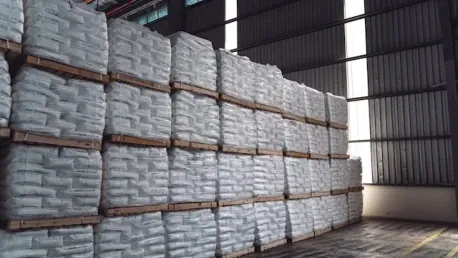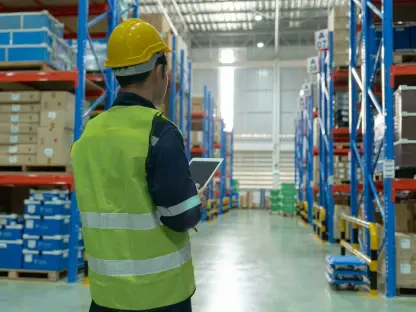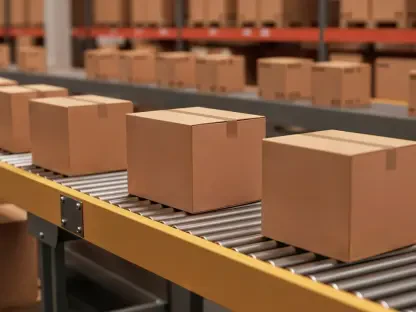The article delves into the expanding landscape of logistics-focused robotics within warehouse and supply chain operations. The burgeoning market, valued at $8.78 billion in 2023, signals a profound shift towards automation, anticipated to strongly proliferate over the next decade. With a comprehensive examination of various robotic systems, the article aims to elucidate their capabilities and establish their value proposition for potential adopters. This extensive summary captures the critical points, common themes, trends, and insights shared across the article, presenting a cohesive understanding of how robotics technology is revolutionizing warehouse logistics. The integration of robotics and AI is driving an unprecedented transformation, providing enhanced efficiency, accuracy, and safety, which in turn offers substantial competitive advantages to companies that are quick to adopt these innovations.
Autonomous Mobile Robots (AMRs) in Warehouse Logistics
Autonomous Mobile Robots (AMRs) have emerged as transformative agents in warehouse logistics, navigating through aisles using advanced sensors and artificial intelligence without the need for fixed paths or significant infrastructural changes. These robots showcase remarkable flexibility in adapting to changes in warehouse layouts, enabling optimized space utilization crucial for high-demand periods or fluctuating inventory needs. This adaptability is particularly beneficial in dynamic warehouse environments where the ability to reconfigure layouts without extensive downtime can lead to significant operational efficiencies. Moreover, AMRs facilitate the swift transportation of goods between designated zones, significantly cutting down transit times and enhancing overall efficiency, which is vital for meeting the fast-paced demands of modern supply chains.
Businesses can easily scale operations by adding more AMRs as required without major overhauls, demonstrating a key benefit of these robotic systems. A prime example of this technology in practice is Amazon, which has deployed a robust fleet of 750,000 AMRs across its fulfillment centers. These robots are instrumental in sorting and transporting packages, reducing human error, and accelerating order processing by 25%. Additionally, in terms of inventory management, AMRs expedite the process by 75%, highlighting their effectiveness in reducing labor costs, enhancing operational speed, and maintaining a competitive edge. This advantage is not limited to major corporations; smaller enterprises can also benefit from the scalability and efficiency brought by AMRs, thereby leveling the playing field in a highly competitive market.
Robotic Picking Systems and Their Impact on Order Fulfillment
Robotic picking systems are revolutionizing order fulfillment processes with their speed and precision. By leveraging advanced vision systems, these robots can accurately identify and pick items, offering substantial improvements in accuracy over human workers. Machine learning algorithms continually enhance item recognition capabilities, drastically reducing errors that are common with manual picking. The increased accuracy ensures that orders are fulfilled correctly the first time, minimizing the cost and customer dissatisfaction associated with returns and re-shipments. Furthermore, these advanced systems handle multiple picks per second, exponentially speeding up order processing times and making it possible to cope with higher order volumes during peak seasons.
Versatility is another key advantage of robotic picking systems. These robots are adaptable to various product types and packaging sizes, maximizing their utility in diverse warehouse environments. Whether handling small consumer goods or larger industrial items, robotic pickers can be programmed to manage a wide array of tasks efficiently. Amazon’s deployment of robotic picker Sparrow exemplifies this technology’s effectiveness in their global supply chain. Handling five billion products annually, the Sparrow system significantly enhances operational efficiency and ensures customer satisfaction through accurate and timely deliveries. As the quality of last-mile delivery greatly impacts the overall customer experience, robotic picking systems become invaluable in the quest for excellence in service delivery. These systems enable companies to maintain high standards of service while also managing costs and operational complexities.
Automated Guided Vehicles (AGVs) in Inventory Management
Automated Guided Vehicles (AGVs) play a crucial role in streamlining inventory management by automating material transport and storage tasks. Unlike AMRs, AGVs follow predefined paths, ensuring precise and consistent movements. This precision is particularly valuable in high-density storage environments where space optimization and inventory accuracy are paramount. Consistency in operation is a hallmark of AGVs; they can continue working without fatigue, maintaining uniform performance throughout their shifts. This relentless performance reduces the likelihood of operational disruptions due to human errors or fatigue, thereby ensuring a smoother and more reliable workflow.
Safety is another significant advantage of AGVs. By minimizing human interaction in high-risk zones, AGVs contribute to a safer work environment and significantly reduce workplace accidents. The integrated tracking capabilities within AGVs provide real-time inventory updates, enhancing both accuracy and accountability. This improved control over inventory translates to efficient resource utilization and heightened productivity. Companies leveraging AGVs can better manage their supply chains, minimize wastage, and optimize their storage facilities. The consistency and reliability offered by AGVs make them invaluable assets in maintaining streamlined warehouse operations, especially in sectors where precision and safety are critical.
AI Integration in Robotic Warehousing
The integration of artificial intelligence (AI) into robotic warehousing systems is unlocking unprecedented levels of efficiency and intelligence. Predictive maintenance is one powerful application of AI, minimizing downtime by anticipating maintenance needs and ensuring continuous operations. This proactive approach helps prevent unexpected breakdowns that can disrupt workflow and lead to costly delays. Additionally, intelligent algorithms for route optimization determine the fastest paths for material handling, significantly reducing transit times and improving overall productivity. These AI-driven optimizations ensure that logistics operations run as smoothly and efficiently as possible, minimizing bottlenecks and improving throughput.
AI-powered demand forecasting is another standout application, analyzing trends to anticipate inventory needs and preventing stockouts—a common issue that frustrates 67% of businesses. By accurately predicting demand, businesses can optimize their inventory levels, reducing excess stock while ensuring that popular items are always available. This capability is particularly crucial in today’s fast-paced retail environment, where consumer preferences can shift rapidly. The strategic advantage of AI-enhanced robotic systems lies in their ability to make informed, data-driven operational decisions with minimal human intervention. This not only boosts productivity and cost-efficiency but also allows businesses to scale operations rapidly and adapt to changing market conditions with greater agility and confidence.
Collaborative Robots (Cobots) Enhancing Human Labor
Collaborative robots (cobots) are designed to work alongside human workers, enhancing their capabilities and increasing productivity. Cobots are equipped with sophisticated sensors and AI to safely interact with humans, preventing accidents and ensuring a harmonious workspace. These robots can handle repetitive and strenuous tasks, allowing human employees to focus on more strategic and complex activities. This collaboration improves overall efficiency and job satisfaction, as workers are relieved from physically demanding or monotonous duties.
Cobots are particularly valuable in tasks such as assembly, packaging, and quality control where precision and consistency are essential. They can be quickly trained and reprogrammed for various tasks, making them highly versatile assets in a dynamic warehouse environment. Companies adopting cobots benefit from the combined strengths of human intelligence and robotic precision, resulting in higher productivity and operational excellence. This synergy between human workers and cobots is transforming warehouse operations, making them more adaptive, efficient, and responsive to the demands of modern supply chains.









